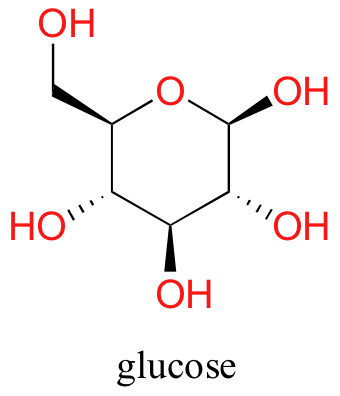The type of intermolecular forces (IMFs) exhibited by compounds can be used to predict whether two different compounds can be mixed to form a homogeneous solution (soluble or miscible). Because organic chemistry can perform reactions in non-aqueous solutions using organic solvents. It is important to consider the solvent as a reaction parameter and the solubility of each reagent. With this said, solvent effects are secondary to the sterics and electrostatics of the reactants. Make sure that you do not drown in the solvent.
Solubility
Virtually all of the organic chemistry that you will see in this course takes place in the solution phase. In the organic laboratory, reactions are often run in nonpolar or slightly polar solvents such as toluene (methylbenzene), hexane, dichloromethane, or diethylether. In recent years, much effort has been made to adapt reaction conditions to allow for the use of ‘greener’ (in other words, more environmentally friendly) solvents such as water or ethanol, which are polar and capable of hydrogen bonding. In organic reactions that occur in the cytosolic region of a cell, the solvent is of course water. It is critical for any organic chemist to understand the factors which are involved in the solubility of different molecules in different solvents.
You probably remember the rule you learned in general chemistry regarding solubility: ‘like dissolves like’ (and even before you took any chemistry at all, you probably observed at some point in your life that oil does not mix with water). Let’s revisit this old rule, and put our knowledge of covalent and noncovalent bonding to work.
Imagine that you have a flask filled with water, and a selection of substances that you will test to see how well they dissolve in the water. The first substance is table salt, or sodium chloride. As you would almost certainly predict, especially if you’ve ever inadvertently taken a mouthful of water while swimming in the ocean, this ionic compound dissolves readily in water. Why? Because water, as a very polar molecule, is able to form many ion-dipole interactions with both the sodium cation and the chloride anion, the energy from which is more than enough to make up for energy required to break up the ion-ion interactions in the salt crystal and some water-water hydrogen bonds.

The end result, then, is that in place of sodium chloride crystals, we have individual sodium cations and chloride anions surrounded by water molecules – the salt is now in solution. Charged species as a rule dissolve readily in water: in other words, they are very hydrophilic (water-loving).
Now, we’ll try a compound called biphenyl, which, like sodium chloride, is a colorless crystalline substance (the two compounds are readily distinguishable by sight, however – the crystals look quite different).

Biphenyl does not dissolve at all in water. Why is this? Because it is a very non-polar molecule, with only carbon-carbon and carbon-hydrogen bonds. It is able to bond to itself very well through nonpolar (London dispersion) interactions, but it is not able to form significant attractive interactions with the very polar solvent molecules. Thus, the energetic cost of breaking up the biphenyl-to-biphenyl interactions in the solid is high, and very little is gained in terms of new biphenyl-water interactions. Water is a terrible solvent for nonpolar hydrocarbon molecules: they are very hydrophobic ('water-fearing').
Next, you try a series of increasingly large alcohol compounds, starting with methanol (1 carbon) and ending with octanol (8 carbons).

You find that the smaller alcohols - methanol, ethanol, and propanol - dissolve easily in water. This is because the water is able to form hydrogen bonds with the hydroxyl group in these molecules, and the combined energy of formation of these water-alcohol hydrogen bonds is more than enough to make up for the energy that is lost when the alcohol-alcohol hydrogen bonds are broken up. When you try butanol, however, you begin to notice that, as you add more and more to the water, it starts to form its own layer on top of the water.
The longer-chain alcohols - pentanol, hexanol, heptanol, and octanol - are increasingly non-soluble. What is happening here? Clearly, the same favorable water-alcohol hydrogen bonds are still possible with these larger alcohols. The difference, of course, is that the larger alcohols have larger nonpolar, hydrophobic regions in addition to their hydrophilic hydroxyl group. At about four or five carbons, the hydrophobic effect begins to overcome the hydrophilic effect, and water solubility is lost.
Now, try dissolving glucose in the water – even though it has six carbons just like hexanol, it also has five hydrogen-bonding, hydrophilic hydroxyl groups in addition to a sixth oxygen that is capable of being a hydrogen bond acceptor.

We have tipped the scales to the hydrophilic side, and we find that glucose is quite soluble in water.
We saw that ethanol was very water-soluble (if it were not, drinking beer or vodka would be rather inconvenient!) How about dimethyl ether, which is a constitutional isomer of ethanol but with an ether rather than an alcohol functional group? We find that diethyl ether is much less soluble in water. Is it capable of forming hydrogen bonds with water? Yes, in fact, it is –the ether oxygen can act as a hydrogen-bond acceptor. The difference between the ether group and the alcohol group, however, is that the alcohol group is both a hydrogen bond donor and acceptor.

The result is that the alcohol is able to form more energetically favorable interactions with the solvent compared to the ether, and the alcohol is therefore more soluble.
Here is another easy experiment that can be done (with proper supervision) in an organic laboratory. Try dissolving benzoic acid crystals in room temperature water – you'll find that it is not soluble. As we will learn when we study acid-base chemistry in a later chapter, carboxylic acids such as benzoic acid are relatively weak acids, and thus exist mostly in the acidic (protonated) form when added to pure water.

Acetic acid, however, is quite soluble. This is easy to explain using the small alcohol vs large alcohol argument: the hydrogen-bonding, hydrophilic effect of the carboxylic acid group is powerful enough to overcome the hydrophobic effect of a single methyl group on acetic acid, but not the larger hydrophobic effect of the 6-carbon benzene group on benzoic acid.
Now, try slowly adding some aqueous sodium hydroxide to the flask containing undissolved benzoic acid. As the solvent becomes more and more basic, the benzoic acid begins to dissolve, until it is completely in solution.

What is happening here is that the benzoic acid is being converted to its conjugate base, benzoate. The neutral carboxylic acid group was not hydrophilic enough to make up for the hydrophobic benzene ring, but the carboxylate group, with its full negative charge, is much more hydrophilic. Now, the balance is tipped in favor of water solubility, as the powerfully hydrophilic anion part of the molecule drags the hydrophobic part, kicking and screaming, (if a benzene ring can kick and scream) into solution. If you want to precipitate the benzoic acid back out of solution, you can simply add enough hydrochloric acid to neutralize the solution and reprotonate the carboxylate.
If you are taking a lab component of your organic chemistry course, you will probably do at least one experiment in which you will use this phenomenon to separate an organic acid like benzoic acid from a hydrocarbon compound like biphenyl.
Similar arguments can be made to rationalize the solubility of different organic compounds in nonpolar or slightly polar solvents. In general, the greater the content of charged and polar groups in a molecule, the less soluble it tends to be in solvents such as hexane. The ionic and very hydrophilic sodium chloride, for example, is not at all soluble in hexane solvent, while the hydrophobic biphenyl is very soluble in hexane.
Exercise
1. Vitamins can be classified as water-soluble or fat-soluble (consider fat to be a very non-polar, hydrophobic 'solvent'. Decide on a classification for each of the vitamins shown below.

Solutions
Exercise
2. Both aniline and phenol are insoluble in pure water. Predict the solubility of these two compounds in 10% aqueous hydrochloric acid, and explain your reasoning. Hint – in this context, aniline is basic, phenol is not!

Solutions
Because water is the biological solvent, most biological organic molecules, in order to maintain water-solubility, contain one or more charged functional groups. These are most often phosphate, ammonium or carboxylate, all of which are charged when dissolved in an aqueous solution buffered to pH 7.

Sugars often lack charged groups, but as we discussed in our ‘thought experiment’ with glucose, they are quite water-soluble due to the presence of multiple hydroxyl groups.
Some biomolecules, in contrast, contain distinctly nonpolar, hydrophobic components. The ‘lipid bilayer’ membranes of cells and subcellular organelles serve to enclose volumes of water and myriad biomolecules in solution. The lipid (fat) molecules that make up membranes are amphipathic: they have a charged, hydrophilic ‘head’ and a hydrophobic hydrocarbon ‘tail’.

interactive 3D image of a membrane phospholipid (BioTopics)
Notice that the entire molecule is built on a ‘backbone’ of glycerol, a simple 3-carbon molecule with three alcohol groups. In a biological membrane structure, lipid molecules are arranged in a spherical bilayer: hydrophobic tails point inward and bind together by London dispersion forces, while the hydrophilic head groups form the inner and outer surfaces in contact with water.

Interactive 3D Image of a lipid bilayer (BioTopics)
Because the interior of the bilayer is extremely hydrophobic, biomolecules (which as we know are generally charged species) are not able to diffuse through the membrane– they are simply not soluble in the hydrophobic interior. The transport of molecules across the membrane of a cell or organelle can therefore be accomplished in a controlled and specific manner by special transmembrane transport proteins, a fascinating topic that you will learn more about if you take a class in biochemistry.
A similar principle is the basis for the action of soaps and detergents. Soaps are composed of fatty acids, which are long (typically 18-carbon), hydrophobic hydrocarbon chains with a (charged) carboxylate group on one end,

Fatty acids are derived from animal and vegetable fats and oils. In aqueous solution, the fatty acid molecules in soaps will spontaneously form micelles, a spherical structure that allows the hydrophobic tails to avoid contact with water and simultaneously form favorable London dispersion contacts.

Interactive 3D images of a fatty acid soap molecule and a soap micelle (Edutopics)
Because the outside of the micelle is charged and hydrophilic, the structure as a whole is soluble in water. Micelles will form spontaneously around small particles of oil that normally would not dissolve in water (like that greasy spot on your shirt from the pepperoni slice that fell off your pizza), and will carry the particle away with it into solution. We will learn more about the chemistry of soap-making in a later chapter (section 12.4B).
Synthetic detergents are non-natural amphipathic molecules that work by the same principle as that described for soaps.

















